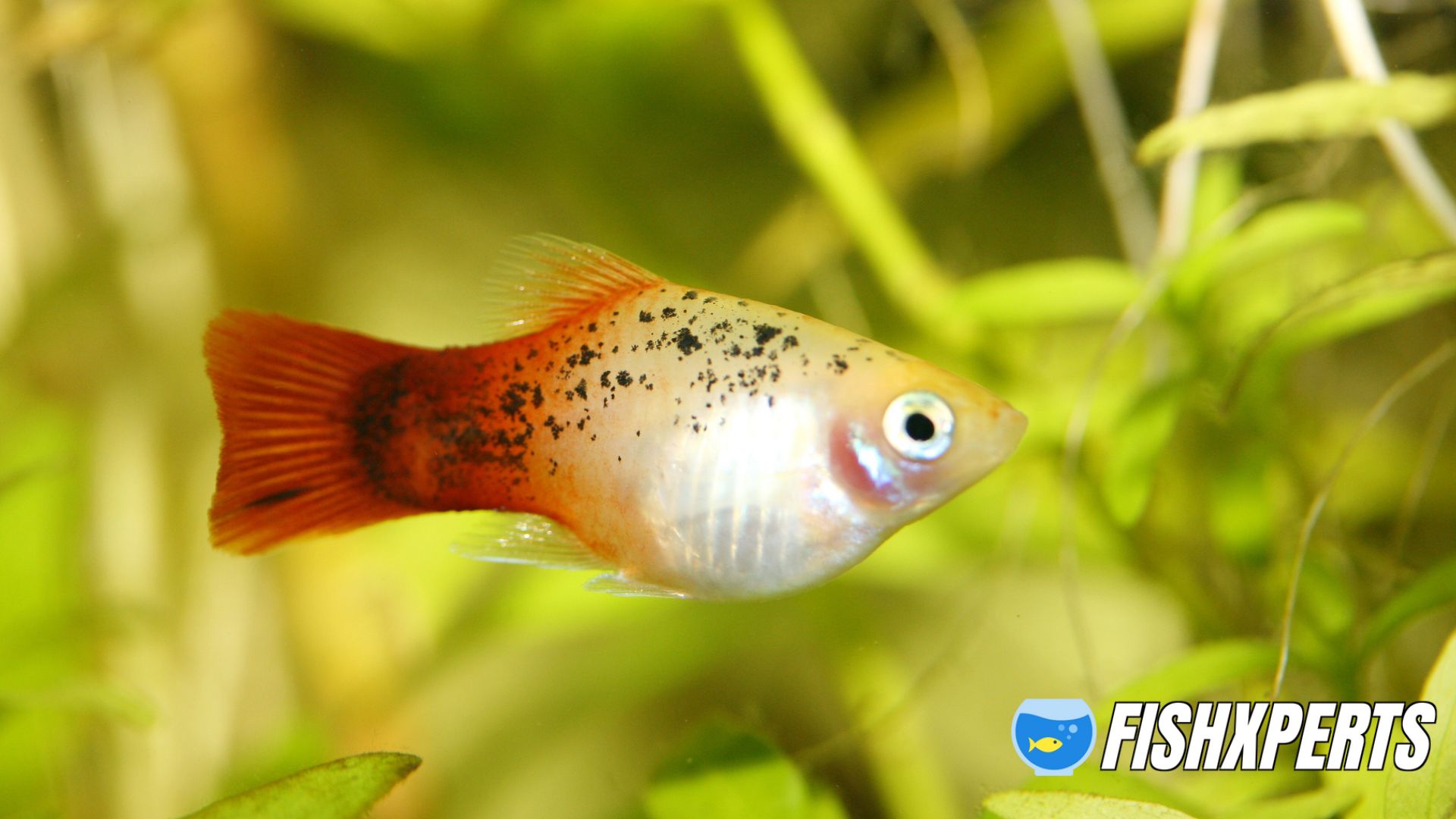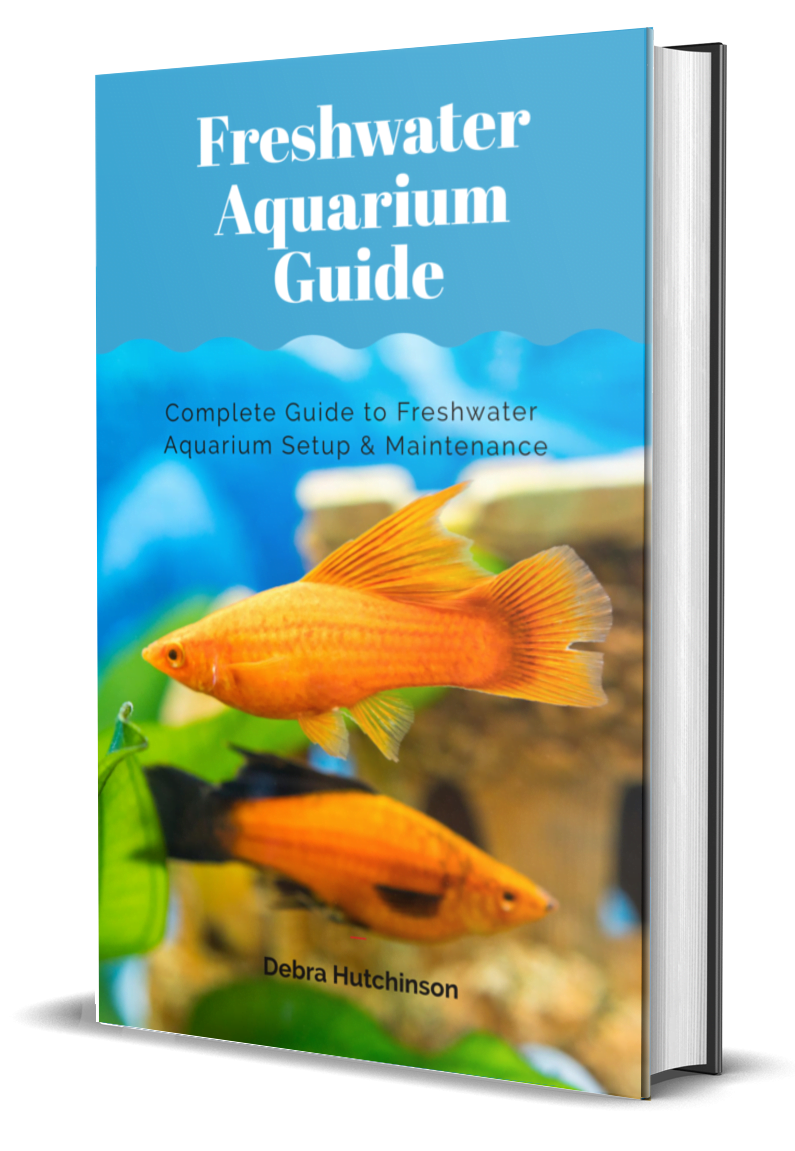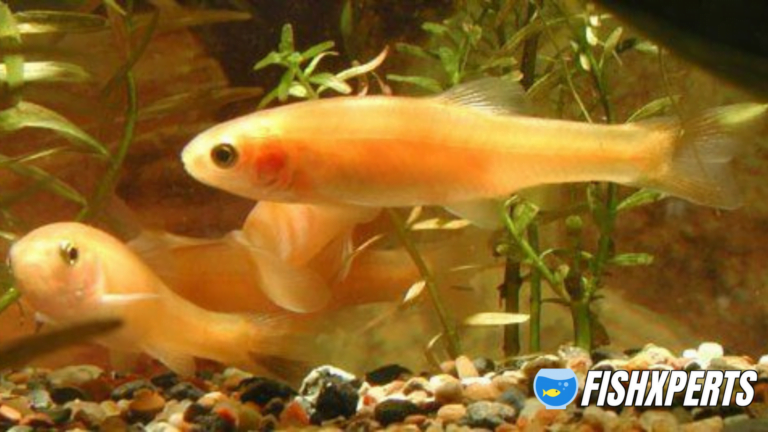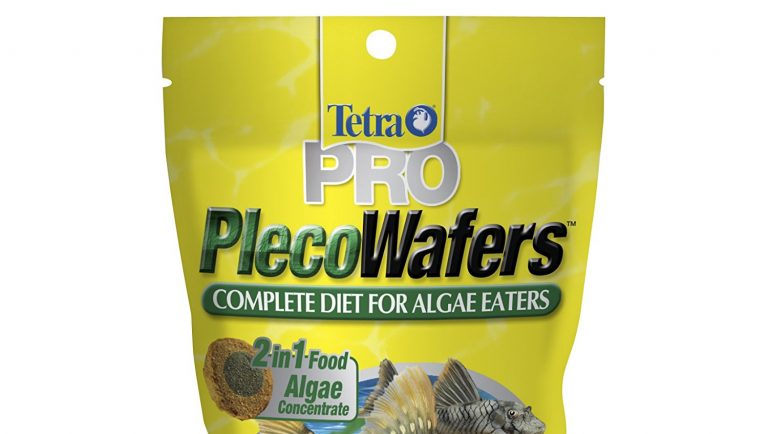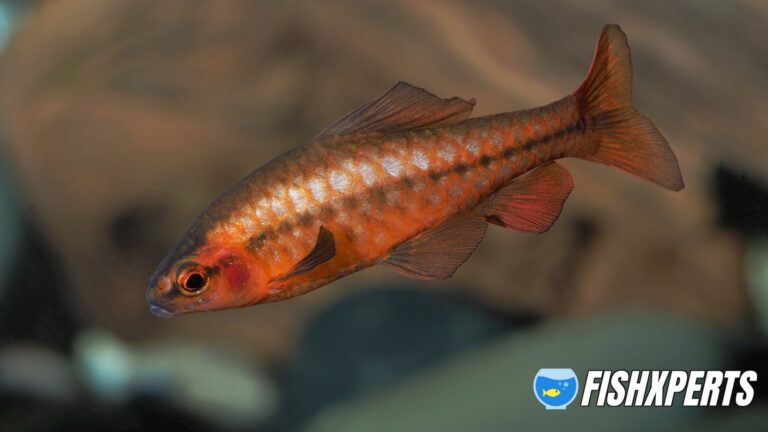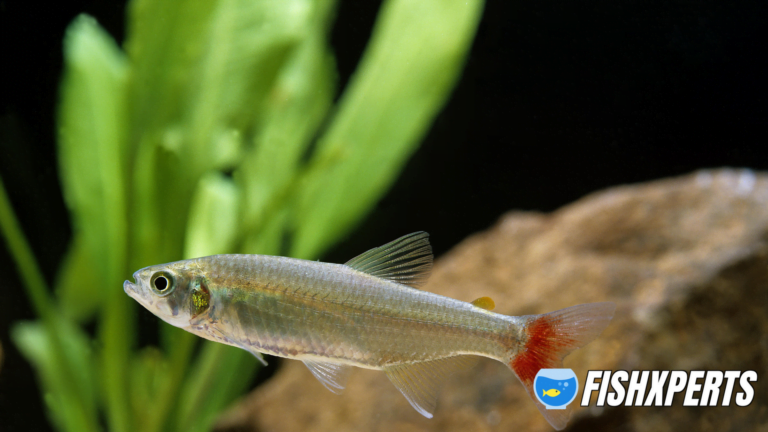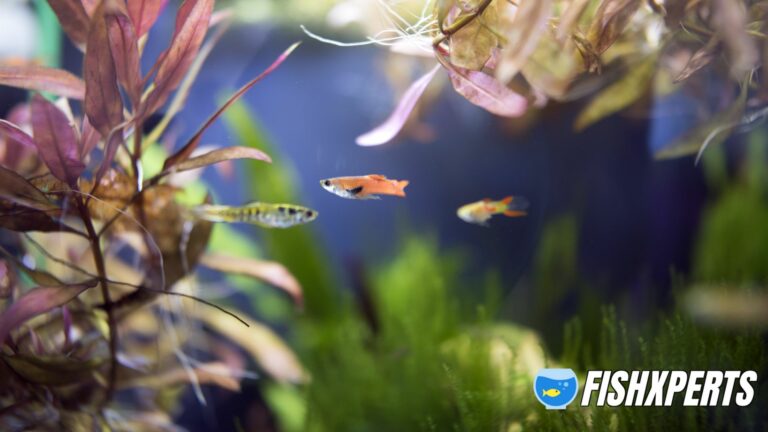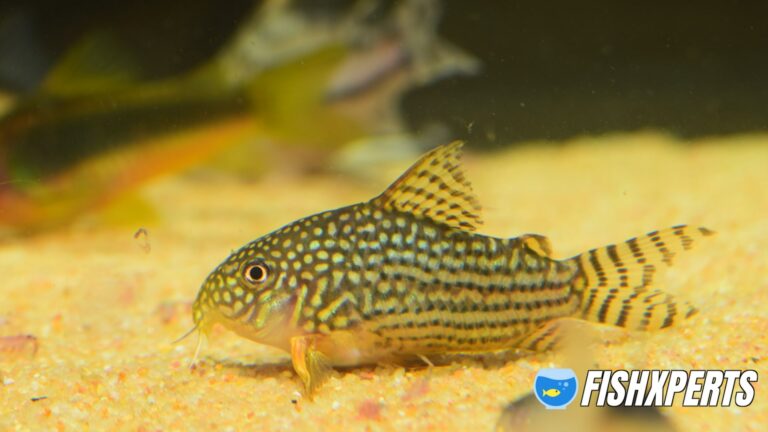Platy Fish Care
Overview
The Platy fish is a freshwater fish that is popular among aquarists and fishkeepers. The fish is a member of the livebearing fish family, which means that the female fish gives birth to live young. The Platy fish is native to Central America and is found in a variety of habitats, including rivers, streams, and lakes. The fish is a popular choice for aquariums because of its bright colors and lively personality.
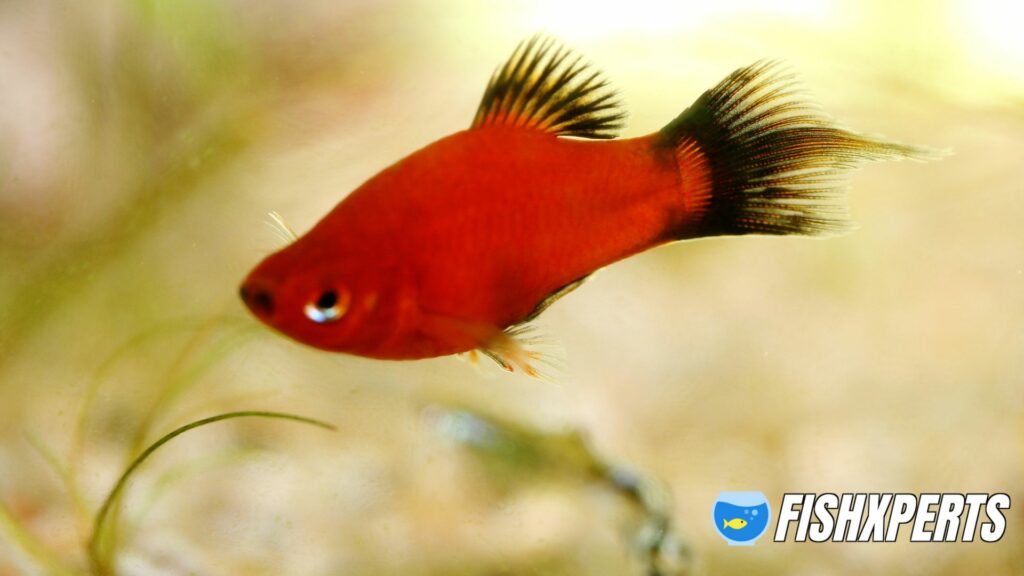
Platy Fish Care Tips In Brief
As an aquarist, you know that platy fish are a popular and hardy species of freshwater fish. But how do you care for them properly?
Here are some tips on how to care for your platy fish:
- Provide them with a spacious tank with plenty of hiding places.
- Keep the water clean and well-filtered.
- Feed them a variety of foods, including live and frozen foods.
By following these tips, you can ensure that your platy fish will thrive in your aquarium!
Lifespan
The average lifespan of a platy fish is between 2 and 3 years, although some platies have been known to live up to 5 years with proper care. Platies are relatively hardy fish and are not susceptible to many diseases, making them a good choice for beginner aquarists. However, like all fish, they are susceptible to poor water quality and improper diet, which can shorten their lifespan.
Appearance
Platy fish are are known for their vibrant colors and active personalities. Platies are available in a wide variety of colors, including red, blue, yellow, orange, and green.
Most Platies have a dark stripe that runs vertically down their bodies. This stripe is known as the lateral line and is used by the fish to sense vibrations in the water. Platies are relatively small fish, reaching a maximum size of about 3 inches (7.5 cm).
While Platies are typically peaceful fish, they can be territorial towards other fish of the same species. In the wild, Platies live in schools and are often found in the company of other small fish.
Platy fish colors
There are a wide variety of colors that platy fish can be. The colors of platy fish can range from very bright and vibrant colors to more subdued and natural colors. Platy fish can be a single color, or they can have multiple colors on their body. The colors of platy fish can also change depending on the time of year or the water conditions.
Some of the most common colors that platy fish are available in are blue, red, orange, yellow, and green. However, there are many other colors that platy fish can be, including white, black, brown, and even purple. Platy fish can also have patterns on their body, such as stripes or spots.
The colors of platy fish can be affected by a number of factors, including diet, water conditions, and stress levels. For example, if a platy fish is not getting enough food, their colors may fade. If the water conditions are not ideal, platy fish may also become less colorful.
If you are looking for a specific color of platy fish, it is best to consult with a local fish store or breeder. They will be able to help you find the perfect platy fish for your aquarium.
Platy Fish Size
As far as aquarium fish go, Platies are relatively small. The average adult Platy will only grow to be about 2.5 inches (6.4 cm) in length. This makes them a great choice for beginner fishkeepers or those with smaller aquariums.
Despite their small size, Platies are very hardy fish and can live for several years with proper care. They are also relatively easy to care for, making them a good choice for beginner aquarists.
When it comes to Platy size, there is some variation among the different species. For example, the Mickey Mouse Platy (Xiphophorus multilineatus) is one of the smallest Platies, only growing to be about 1.5 inches (3.8 cm) in length. On the other end of the spectrum, the Giant Platy (Xiphophorus variatus) can grow to be up to 4 inches (10 cm) in length.
No matter what type of Platy you choose, they will all need a tank that is at least 10 gallons (38 L) in size. A larger tank is always better, as it will provide your fish with more swimming space and help to keep the water quality higher.
Common Platy Fish Types
There are many different types of platy fish, but some of the most common include the Southern platy (Xiphophorus maculatus), the Variable platy (Xiphophorus variatus), and the Mickey Mouse platy (Xiphophorus variatus ‘mickey mouse’).
The Southern platy is a peaceful fish that is a great addition to any community aquarium. They are very active and love to swim around, making them a fun fish to watch. Southern platies are also known to be good jumpers, so make sure your aquarium is covered!
The Variable platy is very similar to the Southern platy, but they are a bit more shy and not as active. They are also not as good of jumpers, so they are a bit easier to keep in an aquarium.
The Mickey Mouse platy is a beautiful fish that is named after its unique black and white coloring. They are a bit more shy than the other platies, but they are still active and make great additions to any community aquarium.
Mickey Mouse Platy
The Mickey Mouse Platy (Xiphophorus maculatus) is a popular freshwater aquarium fish belonging to the family Poeciliidae. The fish is named for its large, round spots which resemble the ears of Mickey Mouse. The fish is native to Central America and can be found in a variety of colors including yellow, orange, red, and white.
The Mickey Mouse Platy is a peaceful fish that is well-suited for community tanks. The fish prefers to shoal and should be kept in groups of at least six. The fish is an omnivore and will eat a variety of foods including flakes, pellets, and live foods.
The Mickey Mouse Platy is a livebearer, meaning that it gives birth to live young. The female fish can store sperm in her body and will continue to give birth to fry (baby fish) even if there are no males present in the tank. The fry are born fully-formed and are able to fend for themselves.
Red Wag Platy
The Red Wag Platy (Xiphophorus maculatus) is a small, colorful freshwater fish that is popular among aquarists and fishkeepers. The fish is native to Central America, where it is found in rivers and streams.
The Red Wag Platy is a member of the family Poeciliidae, which includes livebearing fishes. The fish is named for its red coloration and the wag-like movement of its tail.
The Red Wag Platy is a small fish, reaching a maximum size of about 2.5 inches (6.4 cm). The body of the fish is oval-shaped and flattened from side to side. The fish is mostly red in color, with a dark band running along the length of the body. The fins of the fish are clear or pale in color.
The Red Wag Platy is a peaceful fish that is well-suited for community aquariums. The fish prefers to live in groups, and will do best when kept with other peaceful fish. The Red Wag Platy is an active swimmer and will do well in an aquarium with plenty of open space. The fish is not a strong jumper, so a tight-fitting aquarium lid is recommended.
The Red Wag Platy is an easy fish to care for, and is a good choice for beginner aquarists. The fish is tolerant of a wide range of water conditions, and is not overly sensitive to changes in water quality. The Red Wag Platy is a hardy fish that is resistant to disease.
The Red Wag Platy is a omnivorous fish, and will accept a wide variety of foods. The diet of the fish should include both plant and animal material. A good quality flake food or pellet food can be used as the base of the diet. The fish should also be offered live or frozen foods, such as brine shrimp or bloodworms, on a regular basis.
Sunburst Platy
The sunburst platy (Xiphophorus variatus) is a freshwater fish of the family Poeciliidae. The sunburst platy is a brightly colored fish that is popular in the aquarium trade. The sunburst platy is native to Central America and is found in rivers and streams in Belize, Costa Rica, Honduras, Nicaragua, and Panama.
The sunburst platy is a peaceful fish that is not aggressive towards other fish. The sunburst platy is a good community fish and is compatible with other peaceful fish. The sunburst platy is a hardy fish that is easy to care for.
The sunburst platy is a omnivorous fish and will eat a variety of foods. The sunburst platy is a livebearer and will give birth to live fry. The sunburst platy is a popular fish in the aquarium trade and is widely available.
Green Lantern Platy
The Green Lantern Platy (Xiphophorus helleri) is a brightly coloured freshwater fish of the family Poeciliidae. The fish is named after the superhero Green Lantern, due to its green and yellow colouration. The Green Lantern Platy is a popular fish in the aquarium trade and is often kept by fishkeepers as a beginner fish.
The Green Lantern Platy is a small fish, reaching a maximum size of around 3-4 cm (1.2-1.6 inches). The fish has a laterally compressed body and a small, pointed head. The Green Lantern Platy is green in colouration, with a yellow stripe running along the length of the body. The fish also has a black spot on the dorsal fin.
The Green Lantern Platy is a peaceful fish and can be kept in a community aquarium with other peaceful fish species. The fish is an omnivore and will eat a variety of foods, including pellets, flakes, and live/frozen foods. The Green Lantern Platy is a livebearing fish and will give birth to live young.
Dalmatian Platy
The Dalmatian Platy (Xiphophorus variatus) is a freshwater fish of the family Poeciliidae. It is native to Central America, but has been introduced to other parts of the world, including the United States, where it is sometimes kept as a pet.
The Dalmatian Platy is a small fish, growing to a maximum length of about 4 cm (1.6 in). It is named for its black-and-white spotted coloration, which is similar to that of the Dalmatian breed of dog. The spots are actually black pigment cells (melanophores) scattered among the fish’s otherwise clear skin.
The Dalmatian Platy is a peaceful fish that can be kept in a community aquarium with other peaceful fish species. It is an omnivorous fish, and will eat a variety of foods, including live and frozen foods, flakes, and pellets.
The Dalmatian Platy is a livebearing fish, meaning that it gives birth to live young. The female Dalmatian Platy can give birth to up to 60 young at a time. After giving birth, the female Dalmatian Platy should be removed from the aquarium, as the male Dalmatian Platy may try to mate with her again, which can be stressful and harmful.
Blue Wag Platy
The Blue Wag Platy (Xiphophorus maculatus) is a species of freshwater fish in the family Poeciliidae. It is native to Central America and is widely distributed in the wild in that region. It is a popular aquarium fish and has been introduced to many other parts of the world.
The Blue Wag Platy is a small fish, growing to a maximum length of around 4 cm (1.6 in). It is blue in coloration, with a black spots on the body. The fins are often orange or red in color.
The Blue Wag Platy is a peaceful fish and can be kept in a community aquarium with other peaceful species. It is an omnivorous fish and will eat most aquarium foods. It is a good beginner’s fish as it is relatively easy to care for.
The Blue Wag Platy is a livebearing fish, meaning that it gives birth to live young. The female will give birth to around 20 young at a time. The young are born fully-formed and are able to swim and feed immediately.
Painted Platy
The Painted Platy is a brightly colored freshwater fish that is popular among aquarium enthusiasts. native to Central America, the Painted Platy is a hardy fish that can tolerate a wide range of water conditions. Although they are not considered a true schooling fish, Painted Platies often form loose groups and can be seen swimming in the middle or top levels of the aquarium.
Painted Platies are omnivorous and will readily eat a variety of foods, including flakes, pellets, and live or frozen foods. They are not picky eaters and will even consume algae.
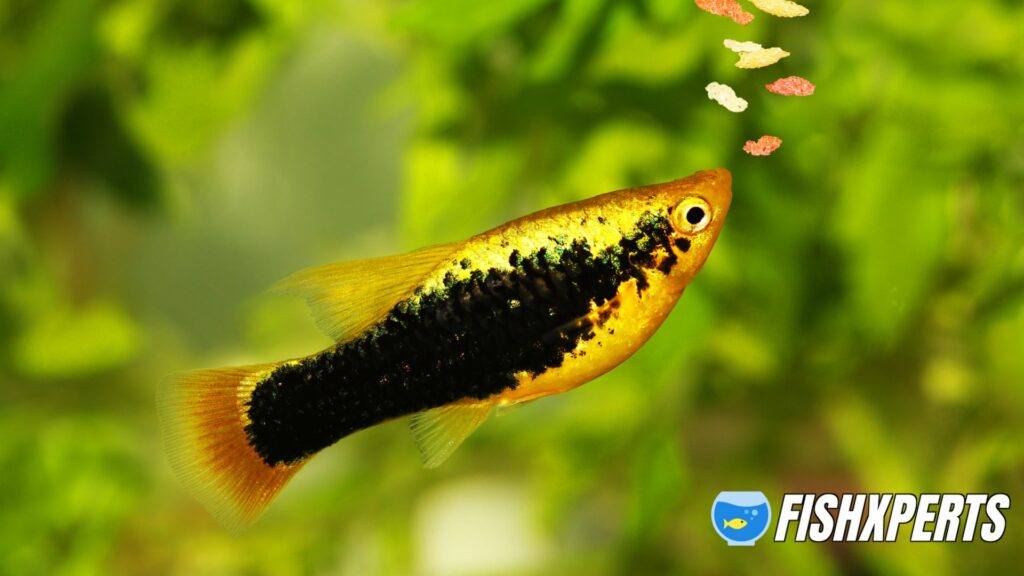
Painted Platies are livebearers, meaning they give birth to live young. Females will often give birth to 10-20 fry at a time. The fry are small and vulnerable to being eaten by other fish, so it is best to remove them from the main tank and raise them in a separate tank.
Painted Platies are a peaceful fish that can be kept with a variety of other fish species. They are a popular choice for community tanks.
Rainbow Platy
The Rainbow Platy (Xiphophorus maculatus) is a freshwater fish of the family Poeciliidae. It is a livebearing fish, meaning that it gives birth to live young rather than laying eggs. The Rainbow Platy is a popular aquarium fish due to its brightly colored body and easy care requirements.
The Rainbow Platy is native to Central America, where it is found in rivers and streams. It has been introduced to other parts of the world, including the United States, where it is sometimes considered a pest species. The Rainbow Platy grows to a maximum length of about 3 inches (7.6 cm).
The Rainbow Platy is a omnivorous fish, eating both plant and animal matter. In the wild, its diet includes algae, insects, and other small invertebrates. In the aquarium, it will eat most kinds of fish food, including flakes, pellets, and live foods.
The Rainbow Platy is a social fish that does best in a group. It is peaceful towards other fish, but can be nippy towards slower-moving fish or those with long fins. The Rainbow Platy is an active swimmer and does best in an aquarium with plenty of hiding places and open swimming space.
The Rainbow Platy is easy to breed in the aquarium. Females can store sperm from males and produce young without the need for a male to be present. A single female can produce several batches of young over her lifetime. The young are born fully-formed and are able to fend for themselves.
Temperament
Platies are peaceful, outgoing fish that make great additions to community aquariums. They are known for their lively personalities and their love of socializing with other fish. However, platies can be nippy towards each other and may fight if not kept in pairs or in groups. They are also known to be jumpers, so it is important to keep a tight-fitting lid on your aquarium.
Are Platies Lonely or Societal in Nature?
Though they are small in size, platies are social creatures that enjoy the company of others. In the wild, they live in large groups and are constantly on the move. In captivity, they should be kept in tanks with at least 2 other platies. If only one platy is kept, it will become lonely and depressed.
Tank Setup
Aquariums for Platies should be at least 10 gallons, with 20 gallons being optimal. Heaters are necessary to maintain a warm water temperature, as Platies are tropical fish. A filter is also necessary to keep the water clean and provide good water quality. Live plants are appreciated by Platies and can help to oxygenate the water.
When setting up an aquarium for Platies, it is important to choose a peaceful community of fish that will not harass or bully the Platies. Good tank mates for Platies include other peaceful fish such as Molly Fish, Guppy Fish, and Swordtail Fish.
Platies are relatively easy to care for and make a great addition to any peaceful community aquarium. With proper care, they can live for 2-3 years.
Tank Size
The size of your platy fish tank is important for a number of reasons. First, platies are active swimmers and need plenty of space to move around. Second, a larger tank will provide more stability for your water parameters, making it easier to maintain a healthy environment for your fish. Third, a larger tank will allow you to keep more fish, which can make your aquarium more interesting to watch.
Ideally, you should aim for a tank that is at least 20 gallons in size. This will give you enough room to keep a small group of platies and provide them with the space they need to swim and explore. If you are planning on keeping a larger number of fish, or other fish species in your aquarium, you will need a larger tank.
When choosing a tank size, it is important to consider the adult size of your platies. Platies can grow to be up to 3 inches in length, so you will need a tank that can accommodate their adult size. In general, you should aim for a tank size that is at least twice the length of your fish. This will give them enough room to swim and explore without feeling cramped.
When setting up your platy fish tank, be sure to include plenty of hiding places and hiding spots for your fish. Platies like to have places to hide and feel safe, and a well- decorated aquarium will provide them with the security they need.
Be sure to include plenty of live plants in your tank, as well as rocks, driftwood, and other decorations. A well- decorated tank will provide your platies with the perfect environment to thrive.
Temperature
The Sunburst Platy (Xiphophorus variatus), also known as the Variable Platyfish, is a freshwater fish native to Central America. It is a member of the livebearing fish family (Poeciliidae) and is closely related to theSwordtail and the Mollies. The Sunburst Platy is a popular aquarium fish and is known for its bright coloration and easy care.
The Sunburst Platy is a small fish, growing to a maximum length of 2.5 inches (6.4 cm). It has a laterally compressed body and a slightly forked tail. The body is mostly silver in color, with a black lateral line and a dark spot on the dorsal fin. The fins are clear or yellowish. The coloration of the Sunburst Platy can vary depending on the fish’s mood, age, and health.
The Sunburst Platy is a peaceful fish that does well in a community aquarium. It is an active swimmer and does best in an aquarium with plenty of open space. It is not a fin nipper and can be kept with other peaceful fish such as Tetras, Guppies, and Mollies.
The Sunburst Platy is an omnivorous fish and will eat most aquarium foods, including flakes, pellets, and live foods. It is a good idea to include some plant matter in its diet, such as algae wafers or blanched vegetables.
The Sunburst Platy is a livebearing fish and does not lay eggs. The female fish will give birth to live young every 4-6 weeks. The fry are large enough to eat baby brine shrimp and other small live foods.
The Sunburst Platy is a hardy fish and is not susceptible to many diseases. However, like all fish, it can be sensitive to poor water quality. It is important to maintain a clean and well-filtered aquarium to keep your Sunburst Platies healthy and happy.
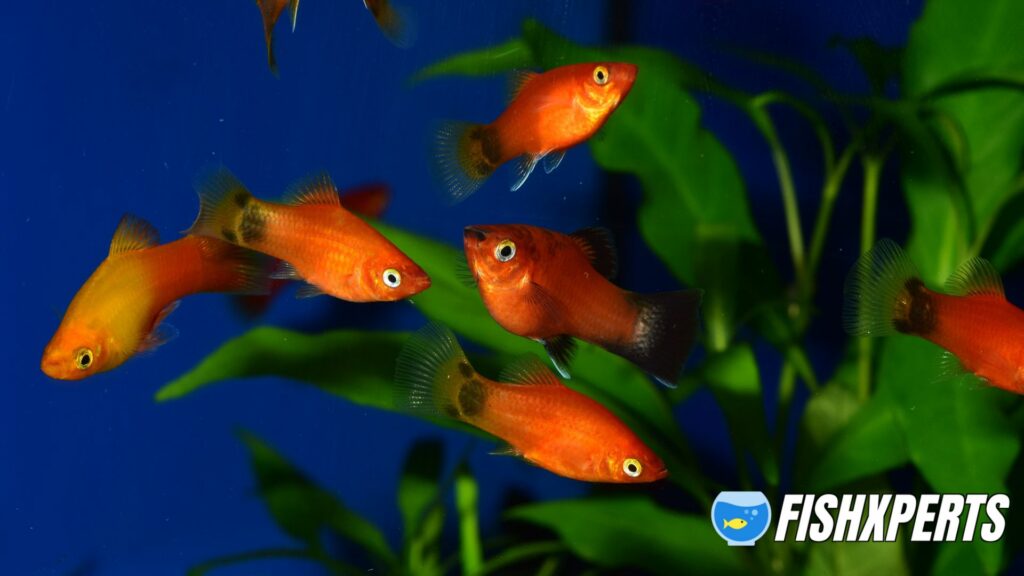
Platy Fish: Interesting Facts & Stats
- The average lifespan of a platy fish is 3-5 years.
- Platies are considered one of the best beginner freshwater fish because they are very hardy.
- Platies are livebearers, meaning they give birth to live young instead of laying eggs.
- Platy fish are usually found in the southern United States, Mexico, and Central America.
- There are over 60 different species of platy fish.
- The most popular platy fish species are the Mickey Mouse Platy, the Variable Platy, and the Wisteria Platy.
- Platy fish are usually between 2 and 3 inches long.
- Platies are omnivores and will eat both plants and animals.
- A group of platies is called a “shoal”.
Water Conditions
Aquarium water conditions are extremely important for the health of your platy fish. Platies are very sensitive to changes in water quality, so it is important to maintain stable conditions. The following parameters should be monitored and maintained:
Temperature: Platies are tropical fish and prefer a water temperature between 72-78 degrees Fahrenheit.
pH: Platies prefer a slightly acidic pH between 6.5 and 7.5.
Ammonia: Ammonia levels should be kept at 0 ppm.
Nitrites: Nitrite levels should be kept at 0 ppm.
Nitrates: Nitrate levels should be kept below 20 ppm.
Water hardness: Platies prefer soft water with a hardness of 5-10 dGH.
To maintain stable water conditions, it is important to do regular water changes and to use a high quality filter. A good rule of thumb is to do a 20% water change every 2 weeks.
Air pump
An air pump is a device that pumps air into an aquarium, providing oxygen for the fish. Air pumps come in different sizes and styles, and can be used to create different effects in the aquarium. Air pumps can be used to create a bubbling effect in the aquarium, or to provide aeration for the fish.
Air pumps are an important part of a platy fish tank setup. Platy fish are very active and need a well-oxygenated aquarium. An air pump can help provide the oxygen platy fish need to stay healthy.
pH Levels
pH levels are a measure of the acidity or basicity of a water solution. They are measured on a scale of 0 to 14, with 7 being neutral, 8-14 being basic, and 0-6 being acidic.
pH levels are important for platy fish tank setup because they can affect the health of your fish. If the pH level is too high or too low, it can cause stress and even death.
The ideal pH level for platy fish is between 7.0 and 8.0. If your tap water is outside of this range, you will need to adjust it before adding your fish. This can be done with a water test kit and some pH adjustment chemicals.
Filter Type
There are three main types of filters used in platy fish tanks: mechanical, biological, and chemical.
Mechanical filters remove physical debris from the water and are typically the first stage of filtration in a platy fish tank setup. Biological filters provide a surface for beneficial bacteria to grow, which helps to break down ammonia and other harmful chemicals in the water.
Chemical filters remove dissolved impurities from the water and can be used in conjunction with other types of filters to provide a complete filtration system for your platy fish tank.
Substrate
Aquarium substrate is the material used on the bottom of an aquarium. It can be used for both aesthetic and functional purposes. Common materials used for aquarium substrate include gravel, sand, and rocks.
Aquarium gravel is the most common type of substrate used in freshwater aquariums. It is available in a variety of colors and sizes, and can be used to create a variety of different looks in an aquarium. Gravel can also be used to provide a place for beneficial bacteria to grow, which can help to keep your aquarium water clean.
Sand is another popular choice for aquarium substrate. It can create a more natural look in an aquarium, and is also available in a variety of colors. Sand is a good choice for aquariums that contain fish that like to burrow, as it can provide them with a place to hide and make their home.
Rocks are a popular choice for aquarium substrate, especially in saltwater aquariums. They can provide a place for beneficial bacteria to grow, and can also be used to create a variety of different looks in an aquarium. Rocks can also be used to provide a place for fish to hide and make their home.
Tank Mates
When it comes to choosing tank mates for platies, there are a few things to consider. First, platies are peaceful fish and do best with other peaceful fish. Second, platies prefer to live in groups, so it’s best to keep them with other fish that also prefer to live in groups. Third, platies are omnivores, so they do best with other fish that are also omnivores.
With these things in mind, some good tank mates for platies include: other peaceful fish like guppies, mollies, and swordtails; other fish that prefer to live in groups like neon tetras and danios; and other omnivores like goldfish and corydoras catfish.
Of course, it’s always best to research the specific needs of any potential tank mates before adding them to your platy’s tank. But following these general guidelines should help you choose fish that will get along well with your platies.
Platy Fish Food/Diet – Diet and Feeding
Platy fish are omnivorous and will eat a variety of foods. In the wild, they feed on algae, small insects, and other small invertebrates. In captivity, they should be fed a variety of foods including live, frozen, or freeze-dried foods, as well as flakes or pellets designed for omnivorous fish.
Live foods such as brine shrimp, daphnia, or bloodworms are a good source of protein and help to keep your platy fish healthy and active. Frozen or freeze-dried foods such as tubifex worms, krill, or mysis shrimp are also good choices and can be found at most pet stores.
Flakes or pellets designed for omnivorous fish are a convenient food source and can be found at most pet stores. Be sure to choose a high-quality food that contains all the nutrients your platy fish need.
When feeding your platy fish, offer them as much food as they can eat in 2-3 minutes, 2-3 times per day.
What Do Platy Fish Eat?
As omnivores, platy fish will eat a variety of food items. In the wild, they feed on small insects, crustaceans, and other invertebrates. They will also consume plant matter and algae.
In the home aquarium, platy fish can be fed a diet of live, frozen, or freeze-dried foods. Commercial platy fish food pellets or flakes can also be used. It is important to offer a variety of foods to ensure proper nutrition.
Platy fish are generally not picky eaters and will accept most food items offered to them. However, it is important to avoid overfeeding as this can lead to health problems.
How often do I feed my fish?
Aquarist and Fishkeeping Expert Tip:
It is generally recommended to feed adult platy fish 2-3 times per week. For fry or baby platy fish, it is best to feed them small amounts of food 2-3 times per day.
Breeding
When it comes to breeding, platy fish are very easy to care for. They are livebearers, meaning they give birth to live young. The female will store the eggs in her body until they are ready to hatch. When they are ready to hatch, the fry (baby fish) will be born fully formed and able to fend for themselves.
If you want to breed platy fish, you will need to provide them with a suitable environment. They will need a spacious tank with plenty of hiding places. They will also need a good quality food to help them grow and stay healthy.
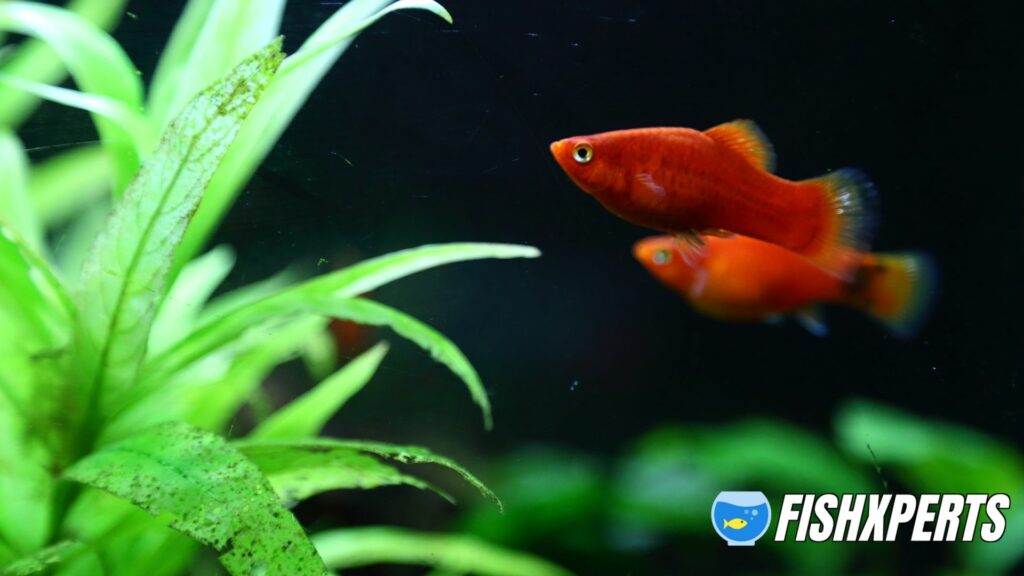
When it comes to breeding, platy fish are very easy to care for. They are livebearers, meaning they give birth to live young. The female will store the eggs in her body until they are ready to hatch. When they are ready to hatch, the fry (baby fish) will be born fully formed and able to fend for themselves.
If you want to breed platy fish, you will need to provide them with a suitable environment. They will need a spacious tank with plenty of hiding places. They will also need a good quality food to help them grow and stay healthy.
How Often Do Platy Fish Make Babies?
For the average platy fish, expect them to have anywhere from 2 to 10 babies at a time. However, some have been known to have as many as 20. The time it takes for platy fish to have babies can be as short as a week to 10 days, or as long as a month.
Ultimately, it all comes down to the individual fish and the environment they are in. If the water is too cold, the fish may not breed. If the female is not properly conditioned, she may not lay eggs.
FAQ
Are platy fish easy to care for?
Yes, platy fish are easy to care for. They are a hardy species that can tolerate a wide range of water conditions, making them ideal for beginner aquarists. Platies are also relatively peaceful, so they can be kept with a variety of other fish species.
How many platies should be kept together?
A good rule of thumb is to keep one platy per gallon of water. So, for a ten gallon aquarium, you could keep ten platies.
How do I know if my platys are happy?
There are a few key signs you can look for to determine if your platys are happy and content in their home aquarium. Firstly, check to see if they are actively swimming around and exploring their surroundings. Secondly, see if they are eating regularly and appear to have a healthy appetite.
Lastly, observe their behavior towards other fish in the aquarium; if they are peaceful and not displaying any aggression, this is a good sign that they are happy. If you notice any of these key signs, it is likely that your platys are content and happy in their aquarium home.
Do platys need air pump?
Yes, platies need an air pump to help them breathe. The air pump will keep the water moving and help to circulate the oxygen in the water.
Do platys like cucumber?
No, platys do not like cucumber. In fact, they will often avoid eating cucumber altogether. If you do offer cucumber to your platys, make sure to remove any uneaten cucumber from the tank afterwards so that it does not rot and pollute the water.
Do platies produce a lot of waste?
Platies are not known for producing a lot of waste, but they are still living creatures that produce waste. All fish produce waste in the form of ammonia, and platies are no exception. Ammonia is toxic to fish, so it’s important to have a good filtration system in place to remove it from the water.
How many babies does a platy have?
A healthy platy can give birth to anywhere from 2 to 20 babies at a time, though the average litter size is 10.
How long do platys last?
Platies are a type of freshwater fish that can live for up to 5 years. However, the average lifespan of a platy is 2-3 years.
Will platys eat goldfish flakes?
Yes, platies will eat goldfish flakes. In fact, they are one of the few fish that actually prefer them to live food. So, if you’re looking for a fish that will help you clean up your goldfish flakes, a platter is a great choice.
Final Thoughts
If you’re looking for a fun and easy-to-care-for fish, then platies are a great choice. They are hardy and can tolerate a wide range of water conditions, making them ideal for beginners.
They are also relatively low-maintenance, so you won’t have to spend a lot of time caring for them. Plus, they are very social creatures and will often interact with other fish in the tank.
Topics Covered

